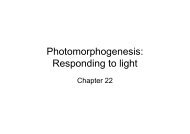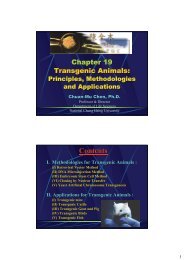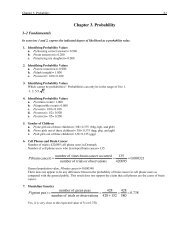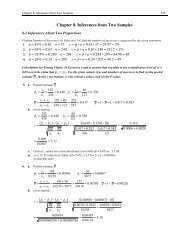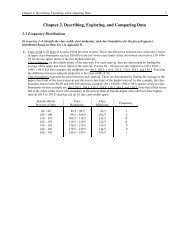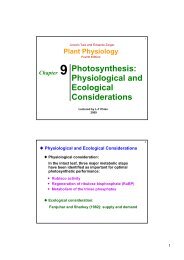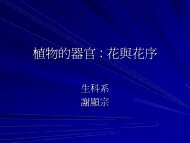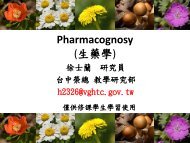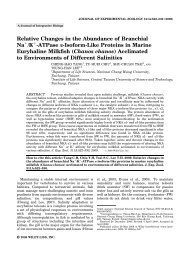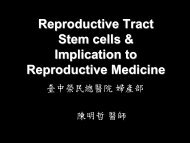Chapter 7. Hypothesis Testing with One Sample
Chapter 7. Hypothesis Testing with One Sample
Chapter 7. Hypothesis Testing with One Sample
Create successful ePaper yourself
Turn your PDF publications into a flip-book with our unique Google optimized e-Paper software.
<strong>Chapter</strong> 7: <strong>Hypothesis</strong> <strong>Testing</strong> <strong>with</strong> <strong>One</strong> <strong>Sample</strong> 229In a left-tailed test at the 0.01 significance level <strong>with</strong> 23 degrees of freedom, the critical value ist α= t .05= 1.714 .In the row for 23 degrees of freedom, the absolute value for the test statistic is greater than 2.807 so the P-value is less than 0.005.We reject the null hypothesis.The sample data support the claim that the mean volume of alcohol in the bottles is less than 12 oz. However,the claim by Harry Windsor has a little merit. However, the sample size is close to 30, so if the distribution issymmetric, the hypothesis test would still be valid.6. Controlling CholesterolThe sample is a random sample. We will assume that the sample is from a normally distributed population.The claim is that the mean amount of the drug is 25 mg, so this is a two-tailed test. The sample size is n = 15making the degrees of freedom df = 14. The significance level is 0.05. Calculating x from the sample datagivesx = Σx /n = 373.3/15 = 24.887Calculating the sample standard deviation from the data givess = nΣ(x 2 ) − (Σx) 215⋅ 9,295.07 − (373.3)2= = 0.590n(n −1)15⋅14We move on to the test.H 0 : µ = 25H 1 : µ ≠ 25The test statistic is t = x − µ 24.887 − 25=s / n 0.590 / 15 =−0.742In a two-tailed test at the 0.05 significance level <strong>with</strong> df = 14, the critical values are ±t α=±t .025=±2.145.In the row for 14 degrees of freedom, the absolute value of the test statistic is less than 1.345, so the P-value isgreater than 0.20.We fail to reject the null hypothesis.There is not sufficient evidence to warrant the rejection of the claim that the mean amount of the drug is 25mg.<strong>7.</strong> Controlling VariationThe sample is a random sample. We will assume that the sample is from a normally distributed population.The claim is that the population standard deviation for the drug is greater than 0.5 mg, so this is a two-tailedtest. The sample size is n = 15 making the degrees of freedom df = 14. The significance level is 0.05.Calculating the sample standard deviation from the data givess = nΣ(x 2 ) − (Σx) 215⋅ 9,295.07 − (373.3)2= = 0.590n(n −1)15⋅14We move on to the test.H 0 : σ = 0.5H 1 : σ > 0.52(n −1)s 14 ⋅The test statistic is χ 2 0.5902= = = 19.494σ 2 0.5 2In a right-tailed test at the 0.05 significance level <strong>with</strong> df = 14, the critical value is χ 2 = 23.685.In the row for 14 degrees of freedom, the test statistic lies between <strong>7.</strong>790 and 21.064, so the P-value is greaterthan 0.10 but less than 0.90.We fail to reject the null hypothesis.There is not sufficient evidence to warrant the rejection of the claim that the population standard deviation forthe drug is greater than 0.5 mg. If the variance is too great, then the amount of drug in some of the pills may betoo large, may exceed safe levels.




